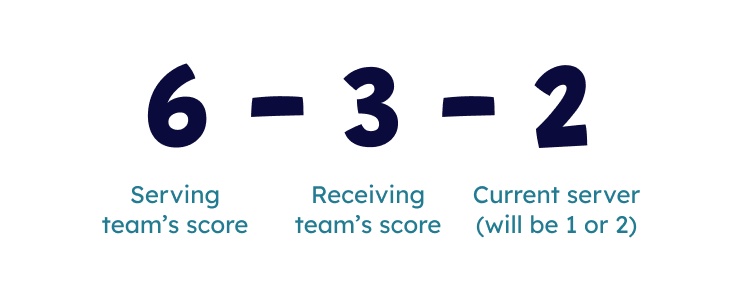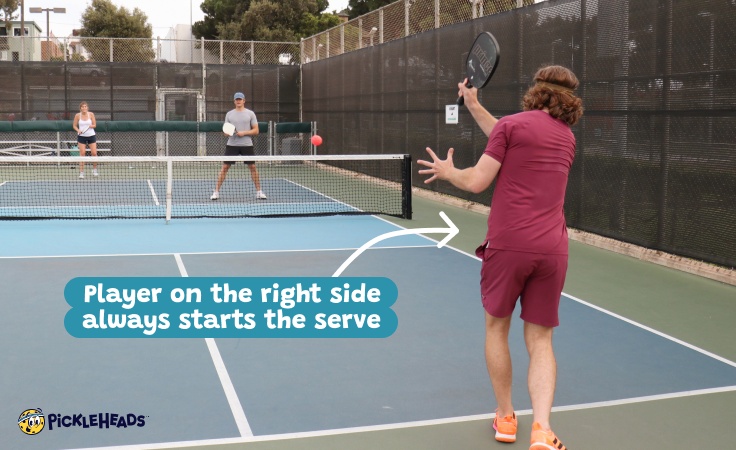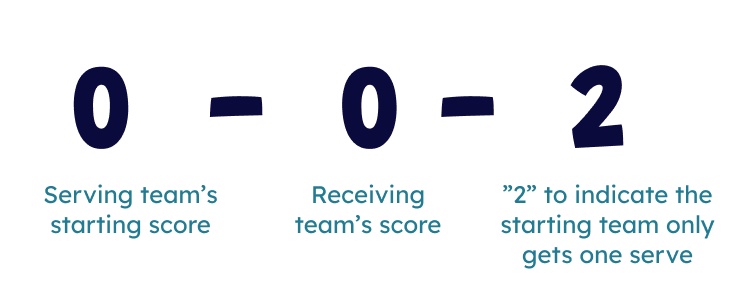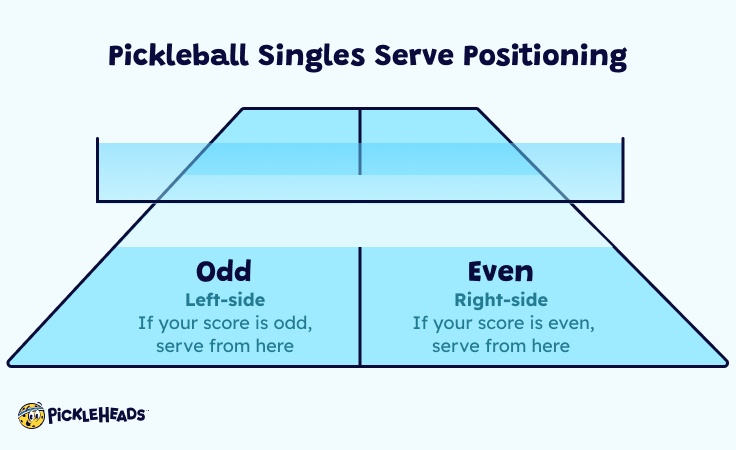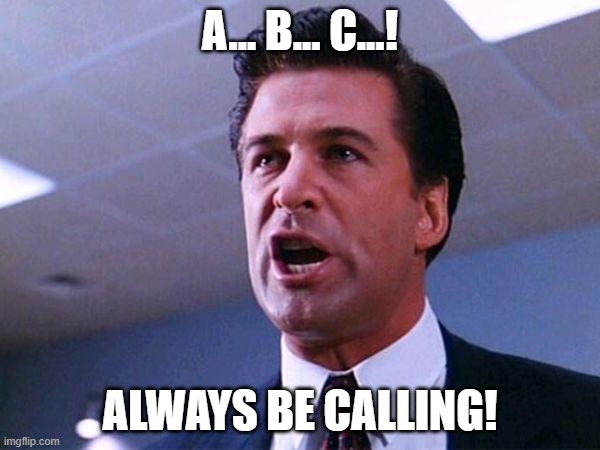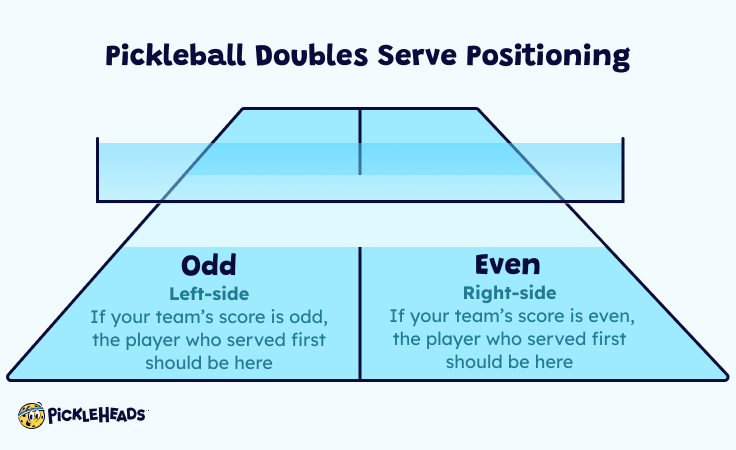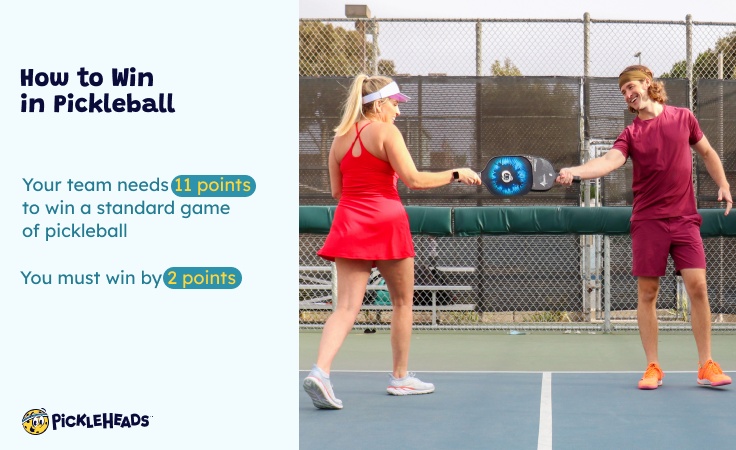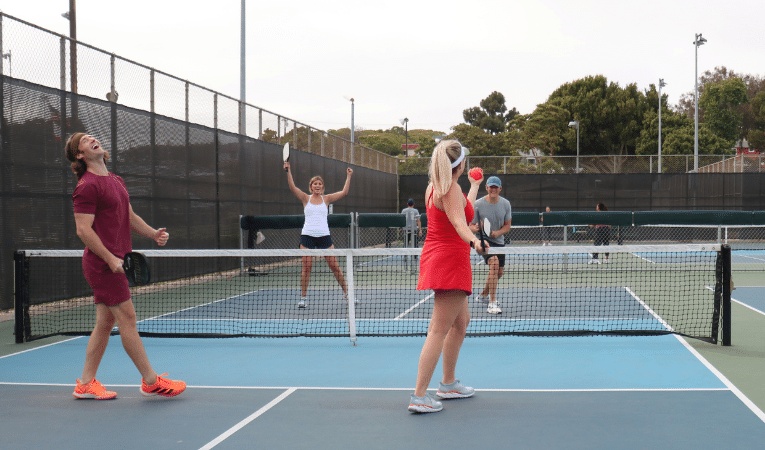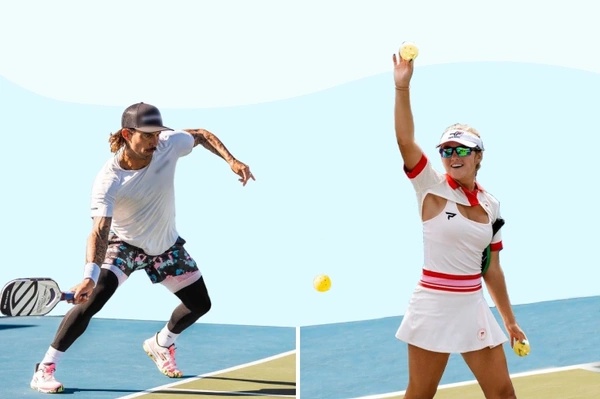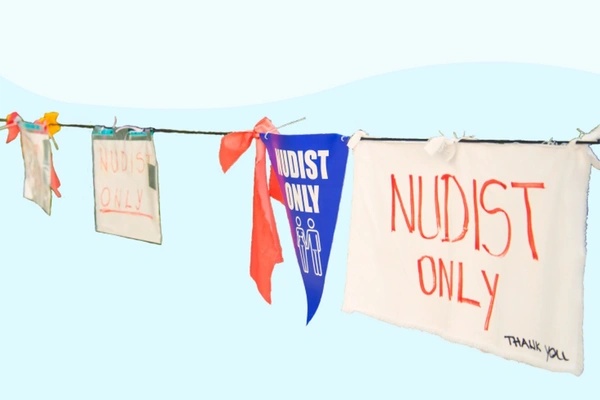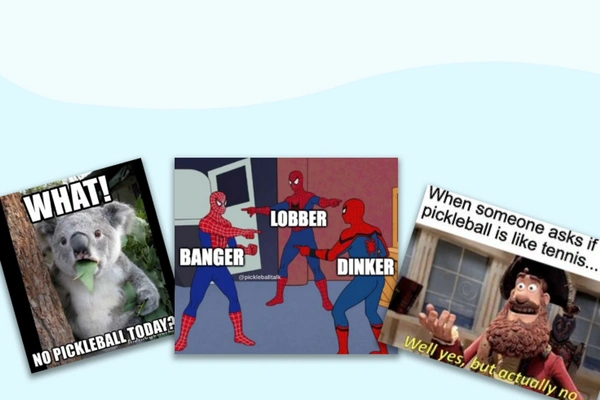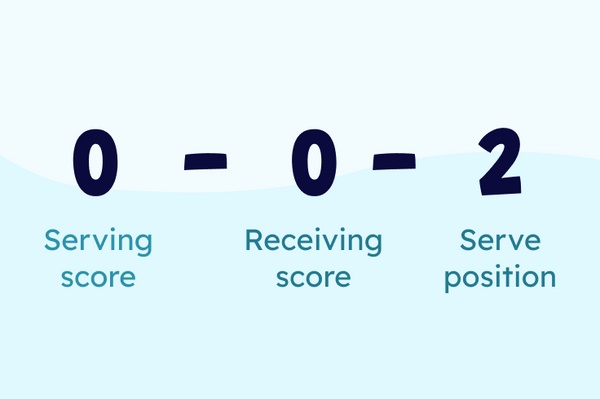
Quick Links
So, you’ve signed up for your first pickleball session, and have learned all about the game and its fascinating history.
You’ve got all the gear you need—your regulation pickleball leotard, spiked golf shoes, and crash helmet.
You’re basically all set, but hold up…
How do pickleball scoring rules work?
It’s basically touchdowns, tries, and field goals, right? No, that can’t be right!
So it must be more like tennis—“love 15”, and all that jazz? Wrong again…
The game is loosely based around ping-pong, badminton, and tennis, so maybe it’s a mish-mash of their rules? Close, but no cigar.
Read on, and let's learn all about scoring in pickleball…
Pickleball Scoring Overview
If you’re new to the sport, pickleball scoring can seem a little confusing..
But fear not! Once you get your head around the rules once, it’s actually a straightforward and logical system.
The doubles and singles games are scored in different ways, so we're going to first look at doubles (the more common way to play) and then look at the scoring for pickleball singles.
Here’s a quick primer if you’re new to the sport:
By the end of this guide, you’ll have all the knowledge you need to get out there and play, and a couple of games will cement the pickleball scoring system in your head.
How Scoring Works in Pickleball Doubles
The first thing you’ll see in pickleball scoring is three numbers, which confuses people right off the bat. Why three, when there are only two teams playing?!
Here’s what each number means in a pickleball score:
1. First number: the current score of the serving team
2. Second number: score of the opposing team
3. Third number: which server on a team currently has the serve (will always be 1 or 2)
Let’s see an example. A typical pickleball score might read 6-3-2.
First, is the easy part. The score is 6-3, with the current serving team winning. That’s why their score goes first because they’re currently serving. If the other, losing team was serving, the score would read 3-6-2.
An important thing to learn right away is that you can only score points when your team is serving. Got it? So if they serve at you and you smash a ball right by them, you haven’t scored a point, but they have now lost that serve and have to hand it over.
So, one team has scored 3 points, and the other team has scored 6. But why the extra number? What’s the meaning of the random ‘2’ hanging out there at the end?
The Third Number in Pickleball Scoring
In pickleball doubles, both players on a team take turns to serve. The person on the right of the court always serves first.
Each team gets two serves before they have to hand them over to the other team, meaning each player gets a turn to serve.
If they score, a player can continue to serve until they mess up, and it still counts as serve 1. And as they continue to serve, the player swaps sides, from right to left, for each serve.
So far, so good?
OK, back to that third number. The third number in pickleball tells us if the team is on their first or second serve.
If their first player has messed up, and they have moved to their second player serving, that third number will be a ‘2’. It’s as simple as that!
Here’s an example. Say we’re in the middle of a game, and you and I are on the winning team (obviously!). We’ve scored 5 points, and the opponents have just 3 (ha!). It’s our turn to serve, because they both just messed up (again!).
The score is now 5 (our score, mentioned first, as it’s our serve) -3 (their score) -1 (as it’s our first serve), so 5-3-1.
I’m on the right, at first serving position, so I shout “5-3-1” and then serve and score (of course!). I swap sides with you and serve again, and this time they fluke a good return, which we miss.
Remember, they do not score for that flukey return, as you can only score points when it’s your team’s serve.
But now it’s over to you to serve (no pressure!).
I’ve scored one, and we’re on our second serve, so the score is now 6-3-2. You smash in two points from two excellent serves (nicely done!), but then we lose a rally and it’s time to let the opponents serve.
As they go to take their first serve, their player shouts…. any takers? That’s right, “3-8-1”! Their score, our score and their first serve!
Confused? It’s okay, just remember these 5 key pickleball doubles scoring rules and you’ll get the score right everytime:
The Starting Score in a Pickleball Game
So now we know what the three numbers mean in pickleball scoring, let’s look at an interesting quirk of the game—the starting score.
When we take our first serve of a game of pickleball, before anyone has scored or even hit a shot, the score is 0-0-2.
Now, from what we’ve learned above, we know that this means that we have no score, the opponents have no score, and the second player is serving.
But why the second player?
When the starting team only gets to serve with their second player, it takes away the first-serve advantage and makes the game fairer for everyone.
This is a great example of the pickleball ideology, which aims to always make the game as inclusive as possible for everyone.
This only happens at the very start. Once the second player serves and loses their serve, the play moves over to the opponents, and the game continues as normal.
Calling Out the Score in Pickleball
Because scoring in pickleball is slightly more technical than in other games, it’s customary (and required in competitions) to call out the score before each serve.
This helps everyone stay on the same page, and avoids confusion.
So when you’re out there playing, don’t be shy, holler out those three numbers before you serve, and do it with gusto!
Scoring in Pickleball Doubles vs Singles
Remember this is the pickleball scoring system for doubles, which is by far the most popular way to play. It may seem complicated at first, but you’ll soon be score-calling with the best of them. The singles game is slightly different, as we’re about to learn…
How Scoring Works in Pickleball Singles
There’s No Third Number in Pickleball Singles Scoring
So, we went over doubles pickleball scoring rules first as doubles is the more popular game, and the scoring system is a little more complex. If you’ve got your head around those, then scoring pickleball singles will be easy.
In singles, that tricky third number is thrown out the window, never to be seen again. A score in singles is simply the amount of points each player has won, so 5-6, for example. That score tells us the person with 5 points is currently serving.
Each Player Only Gets One Serve in Pickleball Singles
Another difference in pickleball scoring between the doubles and singles games is that each player gets one serve, rather than each team getting two in doubles. So if you mess up your serve, it’s the opponent’s turn to serve straight away.
Your First Pickleball Hack, Explained
Like in doubles, the serve always begins on the right and goes diagonally. If the player scores, they move to the left and serve from there. If they lose, it’s called a "side out", meaning the opponent now serves, starting at the right.
So, if the score is kept correctly when the server’s score is an even number (0,2,4, etc) then he or she must be serving from the right-hand side of the court. If the server's score is odd (1,3,5 etc) then he or she must be serving from the left side of the court.
This rule is great for reminding you which side to serve from during play if you’ve lost track. Just remember, “even right, odd left”!
How to Keep Track of the Score in Pickleball
ABC (Always Be Calling)
All this theory is great and all, but the only way to make sure these rules stick in your brain is to play. It’s much easier to understand gameplay when you’re actually on the court. Remember though, calling the score before serving is crucial to stay on top of pickleball scoring.
Pickleball Hack #2, for Doubles Play
In singles play, our “even right, odd left” rule is a neat trick to remember serving position. And luckily for us, this rule can also be transferred to the doubles game. Here’s how.
Take note of the player who starts the game on the right. For the rest of the match, whenever he or she is on the right side of the court again, their team’s score will always be even.
So, say you and I are on a team, and you’re on the right, so you serve first. You score one, then I serve and score one, and the serve moves over to the opponent. Our score is two, and you are still on the right. As the game progresses this rule always applies.
If you started on the right, and the score is 8-5 to us, our score is an even number, and you will be on the right side of the court.
Likewise, as your partner, if I’m on the right of the court, then our score is odd. Got it? This simple trick helps you keep track of the score at all times.
How Many Points Do You Need to Win in Pickleball?
The Standard Game
So, now that we know how to keep the score as we play, let’s move on to the most important part—winning!
In a standard game, you need 11 points to win in pickleball, just like badminton and table tennis. But there’s a small hitch…
You Must Win by Two Points in Pickleball
In pickleball, you must win by two clear points. So if you reach a score of 10-10, someone will need to score at least two points to win (for example 12-10).
Theoretically, if no team scores two consecutive points you could keep going all day. Rumor has it there’s a game still in play that started in the 1980s…
Can You Only Play to 11 in Pickleball?
This rule of first to 11, however, is not the only way to play. Tournaments often set the winning score at 15, or even 21.
How Do You Win a Pickleball Match?
Simple Answer—It depends…
Speaking of tournaments, pickleball scoring can work in different ways when it comes to games and matches.
Players on different courts and in different clubs work out their competitions in many ways. However, in open play formats, teams usually play one game to 11 points before rotating out and letting new teams play. Sometimes the winners will stay on and play the next team of competitors.
In Pickleball Competitions, it’s Best Two out of Three
In normal competitive play, a pickleball match is played as the best of three games, with each game to 11.
The team who starts only gets one serve, which means they start on their ‘second’ serve, hence the 0-0-2 starting score. After the first team has taken that serve and play have moved on, the scoring follows the normal system described above.
This stops the starting team from getting an advantage by serving first and makes the game fairer for everyone.
It’s a controversial option, but it makes for a quicker game on busy courts.
Some pickleball players always start with the team on the north, while others say south! The best advice we can give is to ask your local courts to find their convention and avoid any courtside faux pas.
Class Dismissed!
And that’s that folks, our in-depth guide to the world of pickleball scoring.
We hope it all made sense, and that you’ve learned the basics. A couple of sessions on the court and you’ll have it down pat, we guarantee it!
If you have any questions or need clarification on any of the points we’ve made, drop a comment in the box below.
And if there’s anything we’ve missed out on or you have any local rules you’d like to share with your fellow pickleheads, we always love to hear from you.
Until next time, happy pickling!
